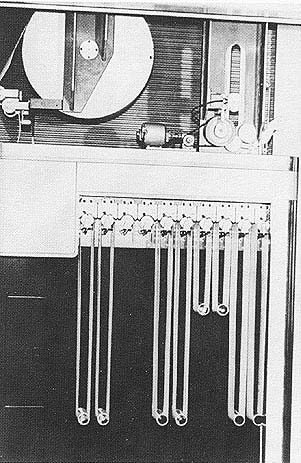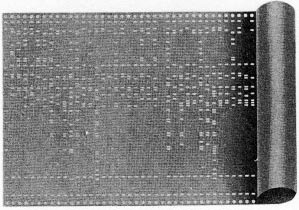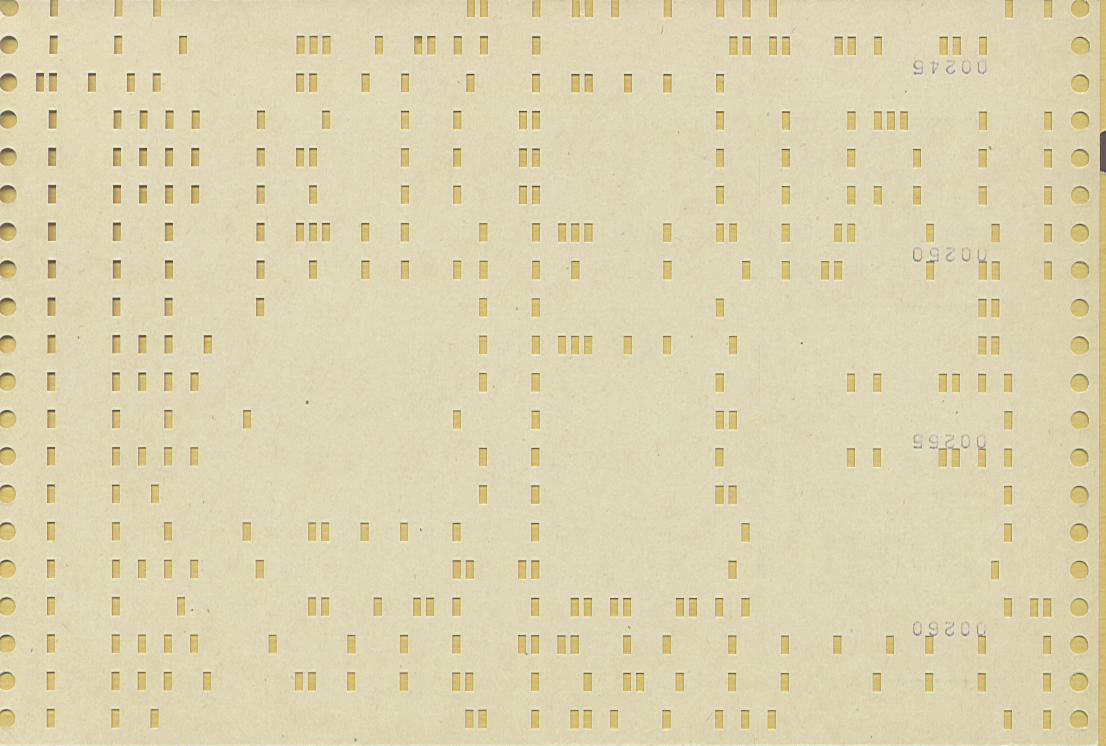SSEC Tape
A section of paper tape from the IBM Selective Sequence Electronic Calculator, 1948-1952, from Herb Grosch [59]. Unlike the familiar 1-inch 10-channel paper tape used with Teletypes (and later with minicomputers), this is uncut IBM card stock, 7.375 inches wide, with 78 data channels plus drive-sprocket holes. From Grosch, Chapter 01:

"The punch stations, slightly modified from standard IBM reproducer components, punched two round sprocket holes at the edges, and 78(!) regular IBM rectangular holes in between. The sprockets drove the tape one line at a time, and drives under separate program control fed the fresh or pre-punched tape under ten 78-brush reading stations. The tapes hanging down could lengthen and shorten, and for program tapes and the table lookup unit we cemented the tape end-to-end into short loops (yes, someone had had to provide the jig). There were three of these monsters at the end of the machine room.
"Up to 36 of the fixed-length tape loops could be mounted on the separate table-lookup unit, which in later years was also sometimes used for program reading. For the lunar calculation, I used 24 loops to make lookup time as short as possible, and we got programming from the main tape readers."
"The SSEC tape drive [above] consisted of a four hundred pound reel of card stock which had to be lifted with a chain hoist. It is sliced, unlike the average roll of card stock, to the length of the punch card rather than to the width. In other words, it is eighty columns wide. It passes through a punch unit in the square box at the upper left and is punched with two round sprocket holes and up to seventy-eight conventional IBM rectangular holes. One line of this punching constitutes a line of instructions or data. It could then go to as many as desired of the succeeding ten stations or loops used as subroutines. Sixteen feet high racks of wire contact relays (equivalent of what we would call core or central memory) were behind the scenes. The electronic memory in the arithmetic unit was only a few words, since the tapes were used as input and longterm memory devices." (This paragraph, also by Herb Grosch, is from a Computer Museum lecture given October 22, 1982.)
The following picture and text are from Eckert's 1948 Scientific
Monthly article [83]:

